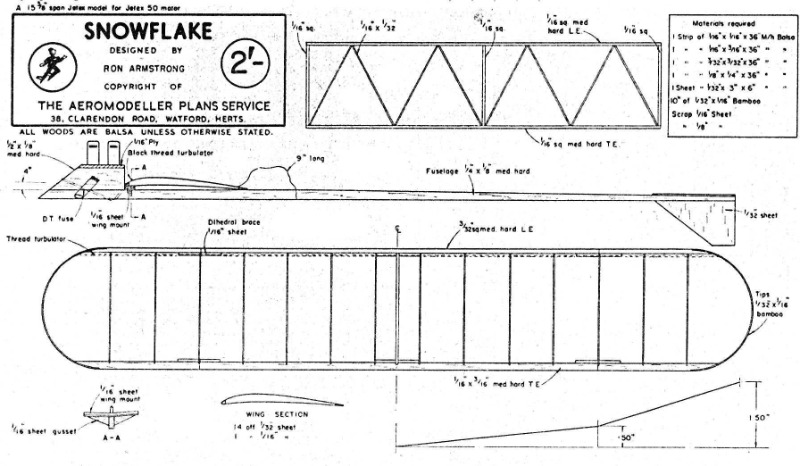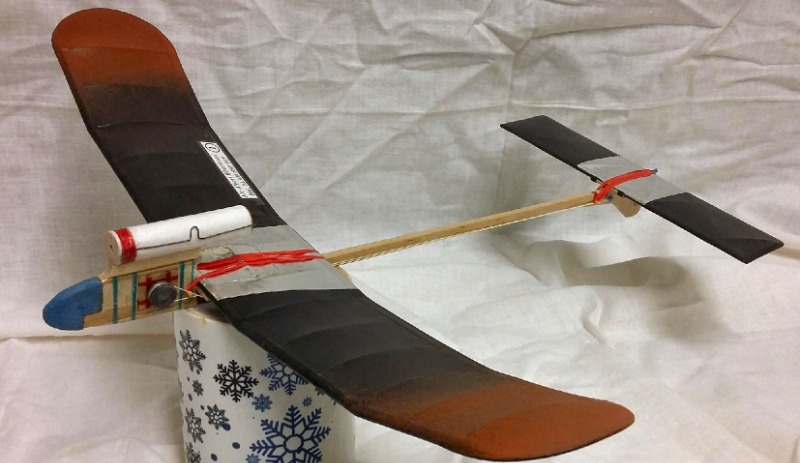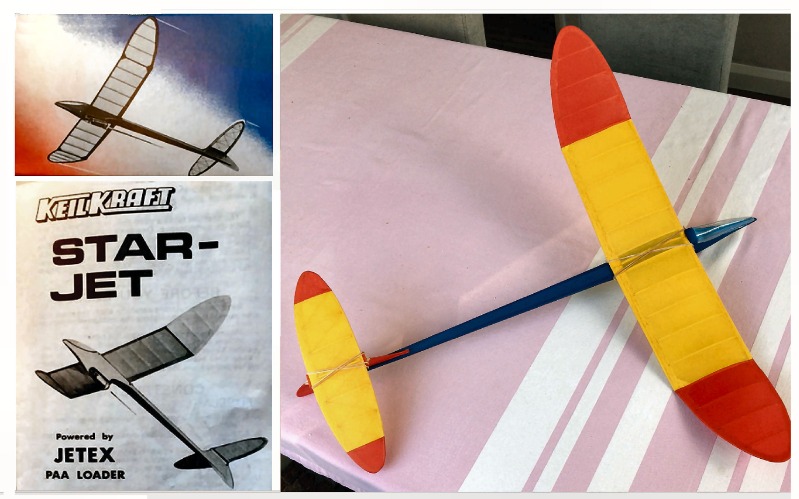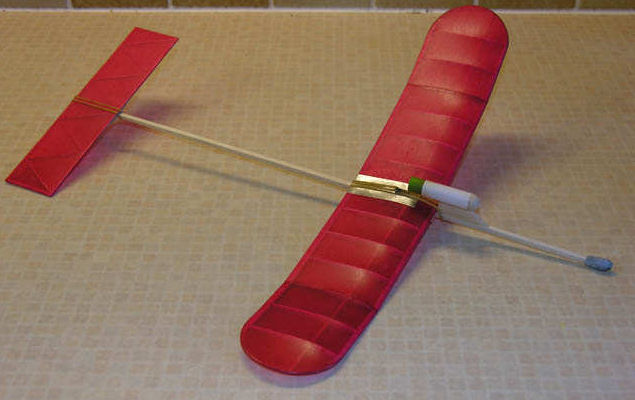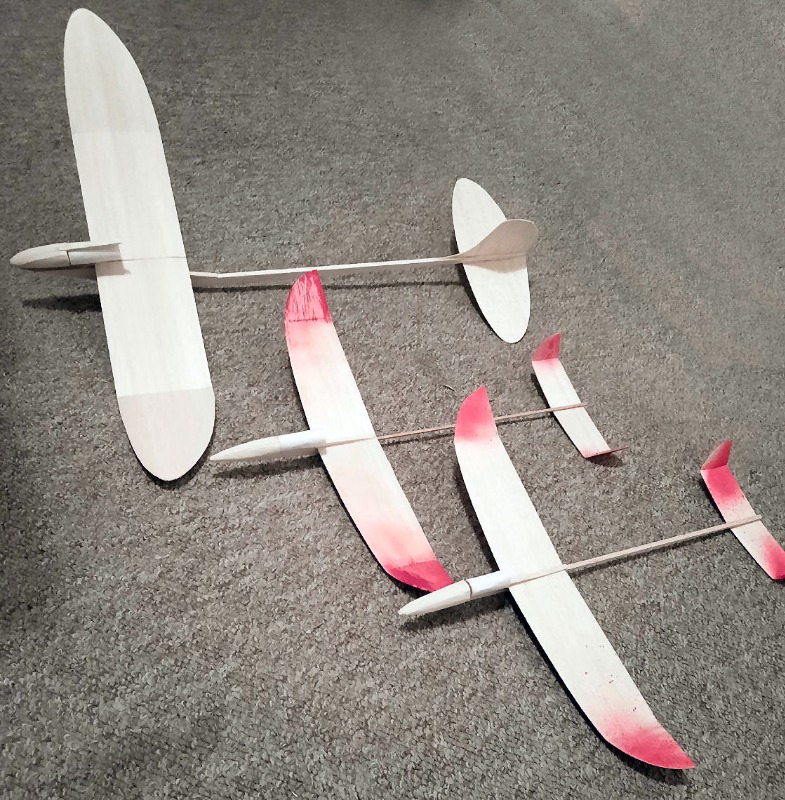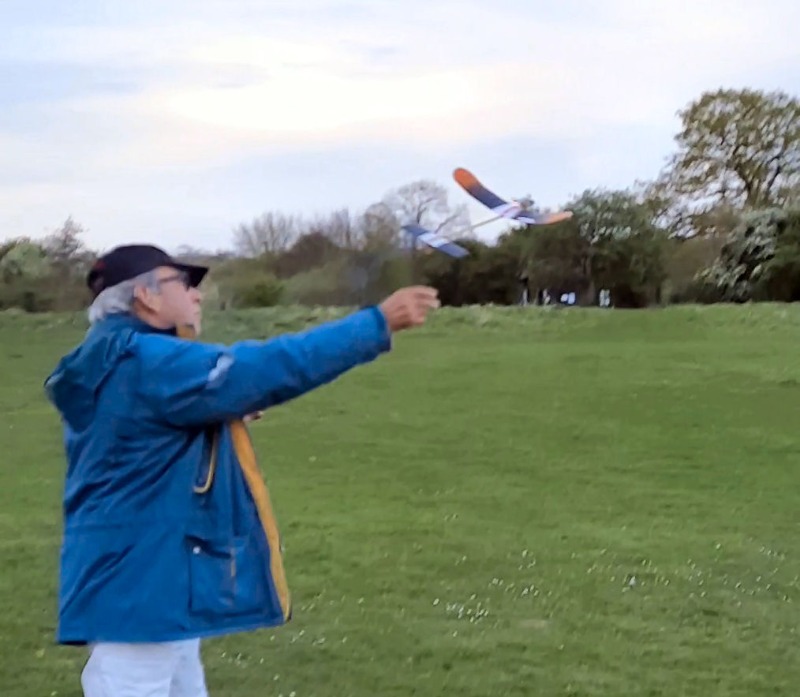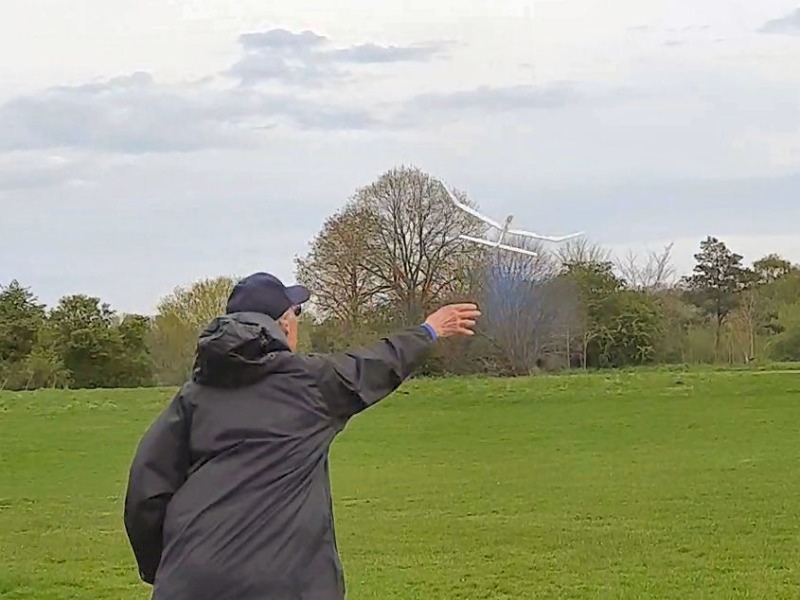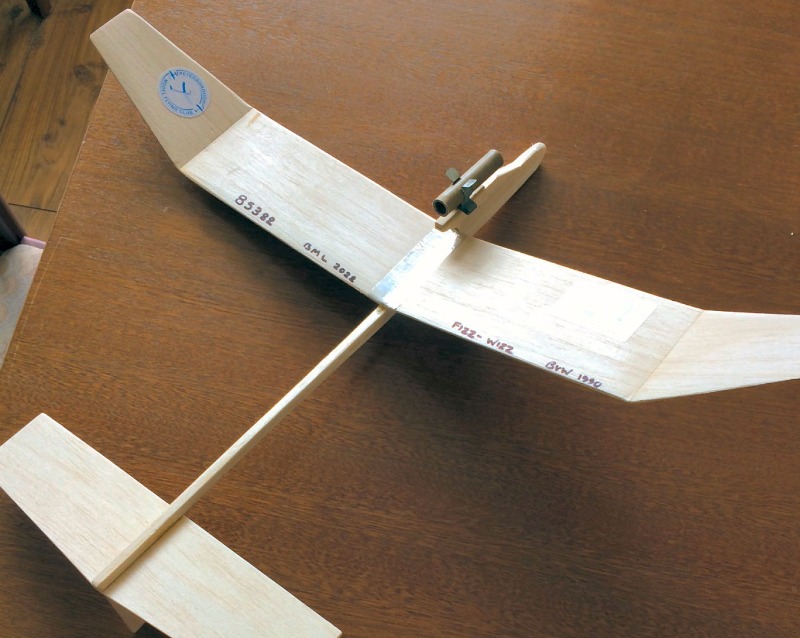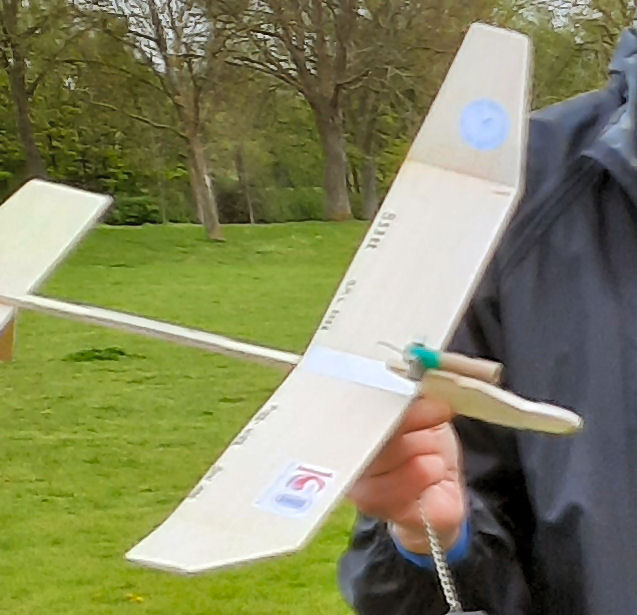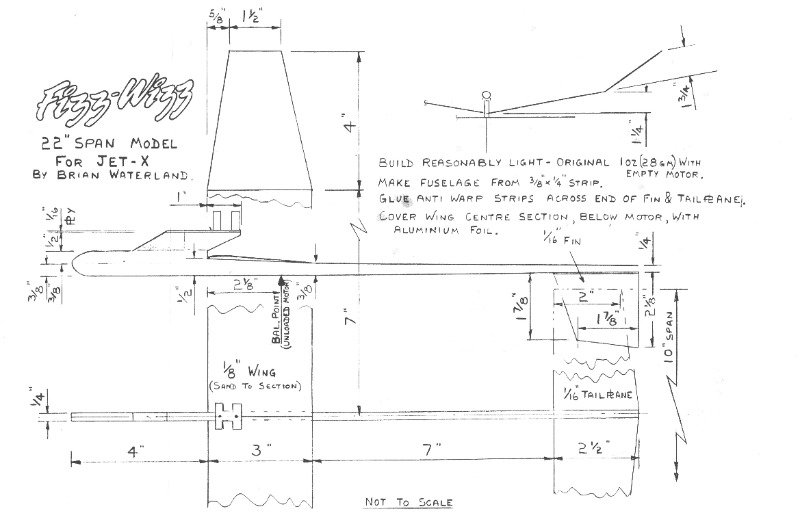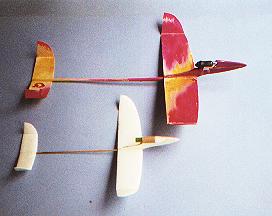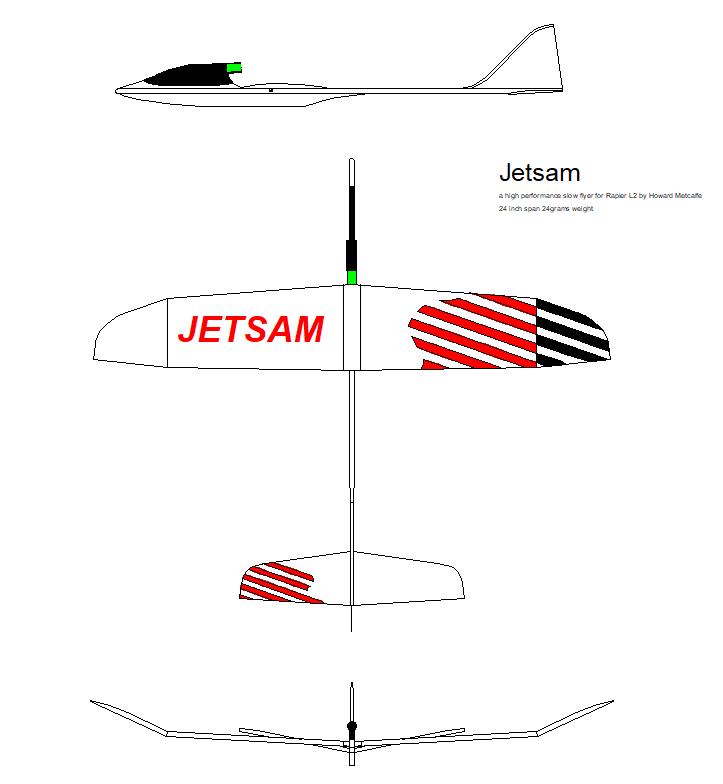This posting could go equally in 'Building' but as the emphasis is mainly on flying I'm putting it here. The consistant and reliable performance of TSP motors makes a 'rocket duration' class attractive and viable for the first time in years. Brian Lever of Peterborough MFC is especially keen on this, and has organised competitions to take place at the BMFA centre at Buckminster. To this end, not a few hardened competition flyers have dusted off their rocketry skills and making models in preparation for what we hope will be the popular 'Open' event.
Bert Whitehead has been busy building 'Snowflakes', a Ron Armstrong design published in the Aeromodeller in 1960:
Above: originally for Jetex 50, Bert has adapted his for TSP L-2 power:
Above: Bert has built three Snowflakes. Note the (very necessary, says Bert) timer and dethermaliser.
Bert writes:
"I really hate to alter designs by the old masters so my Snowflakes are not Snowflakes at all but I've used the dimensions to give me a starting point because this is all new to me. I've made 3 because I expect to loose them at Ferry Meadows even though I've built into them home made viscous DT's. (Silly Putty). I've built them for L2's with a motor tube made with 5 layers of ordinary photocopier paper (pva glue). The nose has tough foam from Flip Flop shoes soles for safety. Wing Trailing Edge has Bamboo shavings capping from kebab skewers for a bit more strength. Tailplane pivots on a 1.5 mm bamboo hinge pin with 2 plastic tubes bound to the L E. Covered with Esaki and Easi Dope over all the model to try to waterproof it a bit. Wing and TP bands cut from balloon necks. Balance point 1" from Trailing edge. Too heavy at 26 Gms but glides OK. Not flown under power yet"
Brian Lever, believing a 'good big one will beat a good little 'un' has built a Star Jet, to be powered by an L-3 (or, says Brian, an L-4!)
Others might want to fly a smaller model powered by an L-1:
Above: yet another Snowflake!
A ‘one motor’ duration competition, one where the results better reflect the competitor’s design, building and flying skills, is also an attractive possibility. The proposed rules are shown below:
PMFC TSP L-1 Rocket-plane Duration
1. Models can be of any type of construction, propelled by a single reaction motor of the L-1 type (see (3) below).
2. The contest is open to all who pay and register upon arrival. Contestants must be current BMFA members.
3. Only the latest ‘CE L-1 type TSP motors, be supplied by the organiser, will be allowed. and may not be modified in any way.
4. All motors shall be mounted in a tube or clip securely attached to the model. Note the motors have a diameter of about 10.2mm. Mounting tubes should have a wire retaining clip to prevent the motor from slipping out during launch or separating from the model during the gliding phase of the flight. The Contest Director (CD) reserves the right to bar any model he considers unsafe.
5. Models will be launched by hand; no catapult assisted launching is permitted. If a competitor is using a fuse, the model may not be launched before motor is ignited.
6. An official flight occurs when the model remains in the air for 15 seconds or more. The maximum will be set on the day, taking into account conditions and flying site. A competitor’s best three from five official flights will count towards the final score. Flights of less than 15 sec will be classified as an attempt. Re-flights in the event of, for example, a collision of models will be allowed at the CD’s discretion.
7. Scoring time shall be the total elapsed time of three official flights in seconds, with all fractions of a second first dropped.
8. In the event of more than one competitor posting a maximum score on three flights a ‘one off’ unlimited ‘fly-off’ will decide the winner. No ‘attempts’ will be allowed in the fly-off. The score will be the total flight time or time to OOS.
These are I hope sensible and uncontentious, but a few comments may be necessary to answer any questions the reader may have.
The TSP L-1 motor went through quite a few iterations of size, formulation and hence performance during development, but now consistently produce a thrust of around 100 mN (a third of an ounce in old money) for 11-12 sec. This is more than enough to give the right model a sparkling (!) performance, models should stay in the field and the proposed max is a challenge without thermal assistance.
Luke Goymour has already built models, a Spacejet and variations of Howard Metcalfe's lovely 'QT', for this event:
I hope we will see many different models, old and new, flown in these events!


